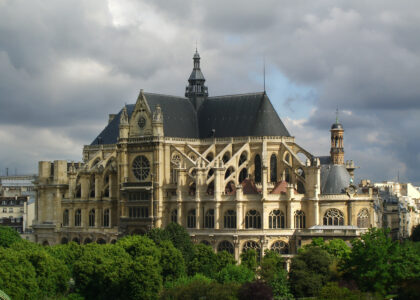Welcome to the Catholic Cemetery of Mobile, a place steeped in history and devotion. Established in 1848 by Michael Portier, the first Roman Catholic Bishop of Mobile, this cemetery was created to provide a dedicated resting place for the city’s Catholic citizens. The cemetery’s founding was driven by necessity, as the Catholic section of the Church Street Graveyard reached capacity following several yellow fever epidemics during the 1830s.
Bishop Portier, a native of Montbrison, France, envisioned a sacred space for the Catholic community, and this vision came to life north of Three Mile Creek. The original five-acre section of the cemetery features a unique design of three concentric rings, centered around a square plot dedicated to the Daughters of Charity. Here stands a large marble monument honoring their sacrifices during the yellow fever outbreak of 1853.
As you walk through the cemetery, you’ll find yourself among the graves of approximately 18,000 individuals, including notable historical figures like Admiral Raphael Semmes, a Confederate naval officer, and Father Abram J. Ryan, often called the ‘Poet-Priest of the Confederacy.’ The cemetery became a pilgrimage site for Confederate descendants, drawn to the graves of these prominent figures.
The cemetery’s evolution continued with expansions in 1866 and the early 20th century, as additional land was acquired to accommodate more burials. By 1929, a permanent altar with a tall bronze Crucifixion scene was added for religious ceremonies, emphasizing its primary role as a place of spiritual reflection and remembrance.
In 1948, the New Catholic Cemetery expanded the grounds, offering perpetual care to maintain the dignity of the resting place. Despite this, the older sections faced periods of neglect and vandalism, prompting restoration efforts starting in 1984 and continuing with the formation of the Friends of Catholic Cemetery in 2006.
The Catholic Cemetery of Mobile stands today not only as a burial ground but as a testament to the city’s rich Catholic heritage and the enduring faith of its people. As you explore, reflect on the lives of those who rest here and the stories they tell of Mobile’s past.




